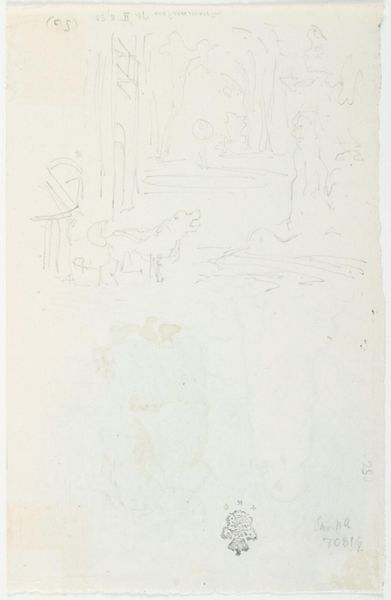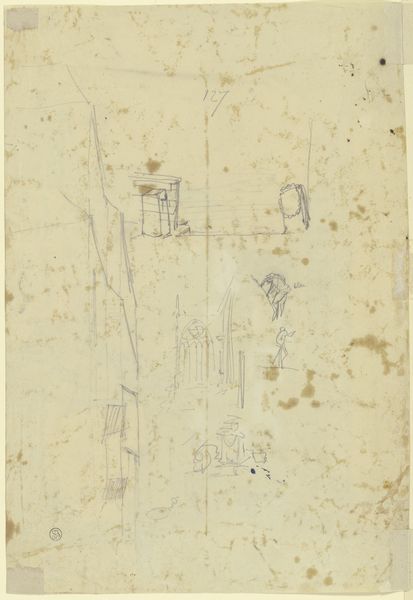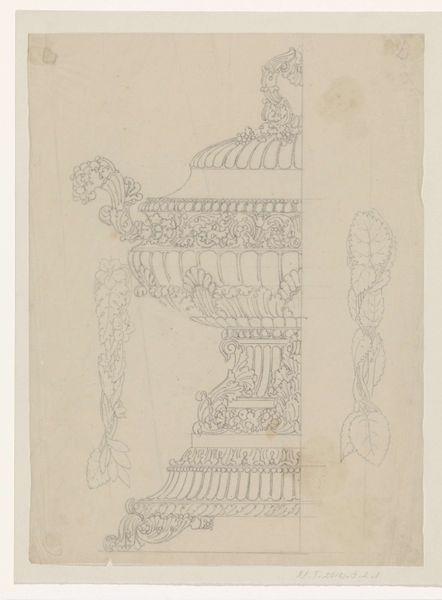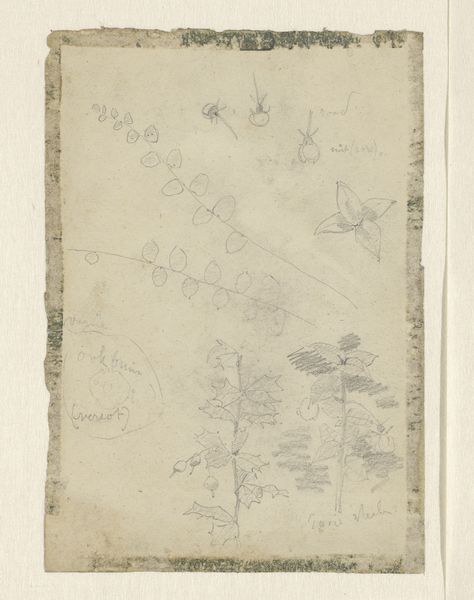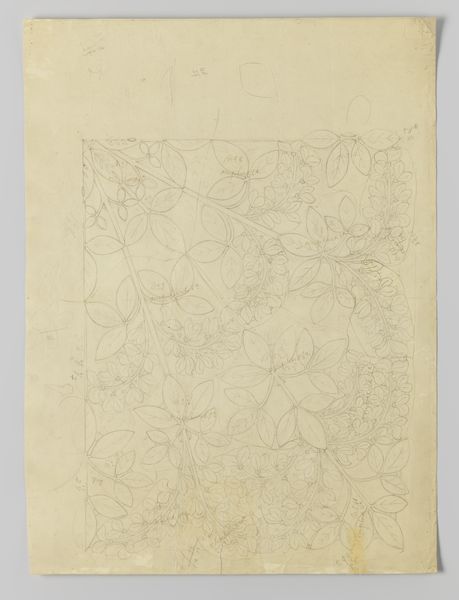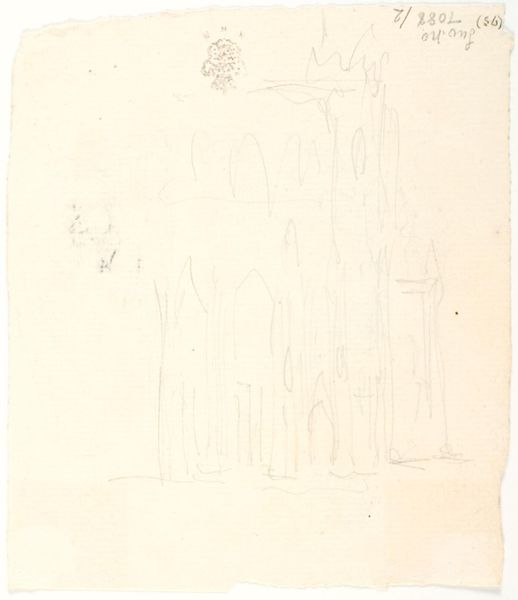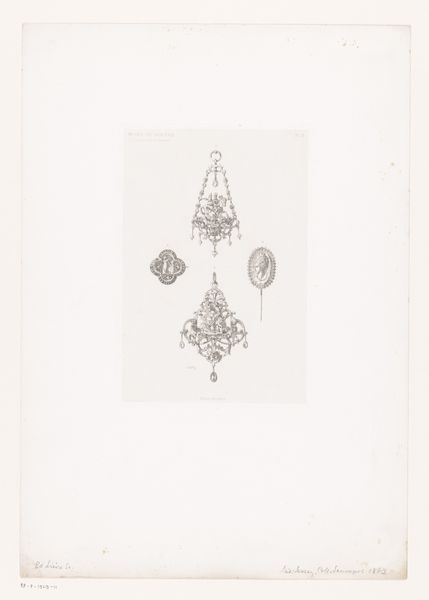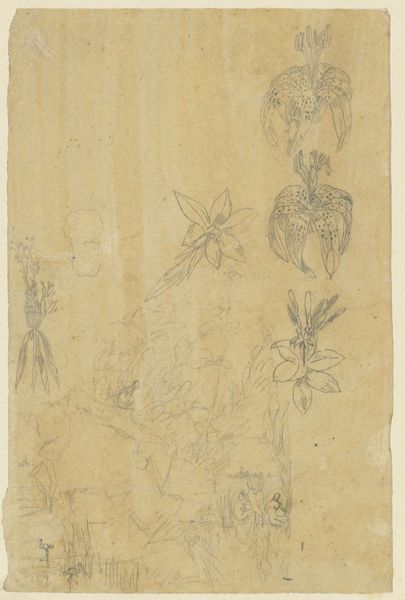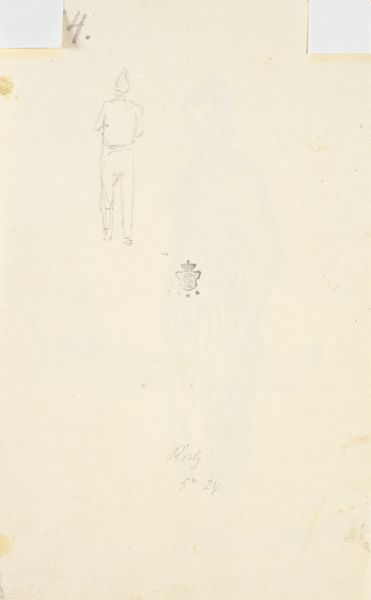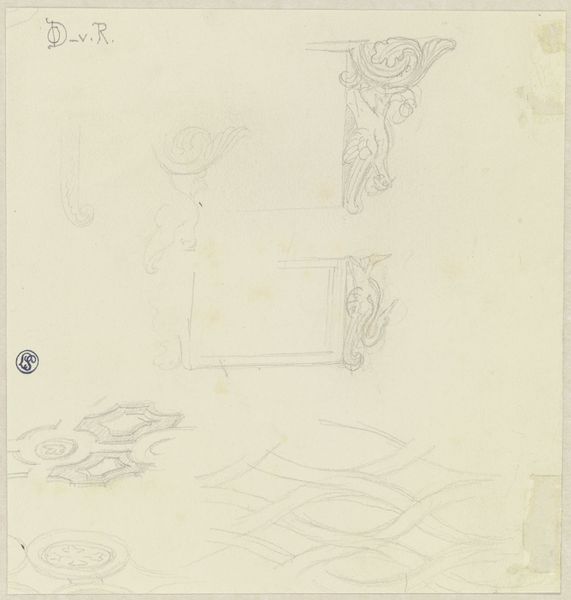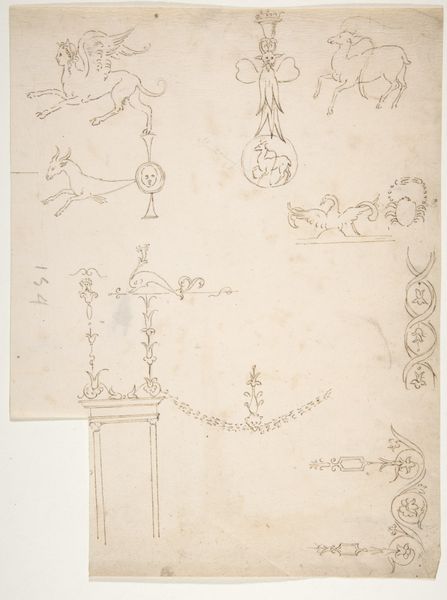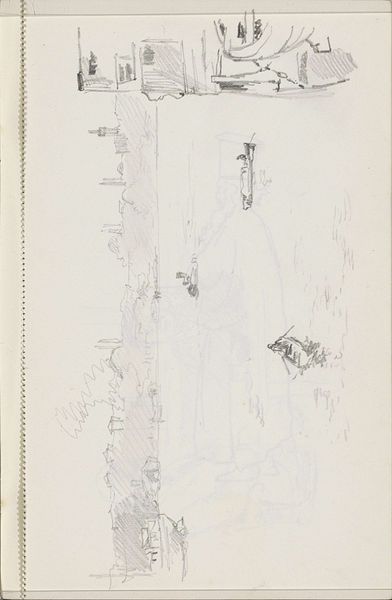
Detail van versierde bamboepalen, Tondano, Minahasalanden, Noord-Celebes c. 1821 - 1824
0:00
0:00
drawing, pencil
#
drawing
#
figuration
#
pencil
#
line
Dimensions: height 322 mm, width 204 mm
Copyright: Rijks Museum: Open Domain
Editor: This is Adrianus Johannes Bik's "Detail van versierde bamboepalen, Tondano, Minahasalanden, Noord-Celebes," a pencil drawing from the early 1820s. I'm struck by how delicate the lines are, giving the bamboo poles an almost ethereal quality. What stands out to you when you look at this piece? Curator: The artist’s skillful manipulation of line is indeed compelling. Observe how the varying pressure creates depth and suggests texture, particularly in the rendering of the foliage. The composition, though seemingly simple, is structured around a series of vertical forms, punctuated by delicate, radiating elements. Notice the formal repetition of shapes, even within the differing subjects portrayed, establishing an interesting visual rhythm. Editor: That's a fascinating perspective! I was initially drawn to the representational aspect of the figures on the poles. Curator: Representation is certainly present, but it's vital to consider how those figures function within the overall composition. The positioning, the scale relative to the poles themselves, consider what impact their presence creates when considered in conjunction with the geometry evident throughout. Editor: So, you're saying that even with recognizable figures, it is more about how all those elements interact within the defined picture plane? Curator: Precisely. By attending to the formal relationships – line, shape, composition – we gain deeper insight into the artist’s intent and the drawing’s aesthetic impact. Are there any specific details within the individual elements which you find the most successful? Editor: Looking closer, I can see how the intricate patterns created with the pencil marks gives depth to otherwise flat images. Curator: Excellent. Now, think about the conscious choice to deploy linearity to invoke a sense of depth and volume, rather than the expected use of tonal modeling. That sort of analysis offers exciting new potential readings of the work. Editor: I'm beginning to see that it's not just what is depicted, but how it's depicted that really matters! Thanks, I've really learned a lot.
Comments
No comments
Be the first to comment and join the conversation on the ultimate creative platform.
